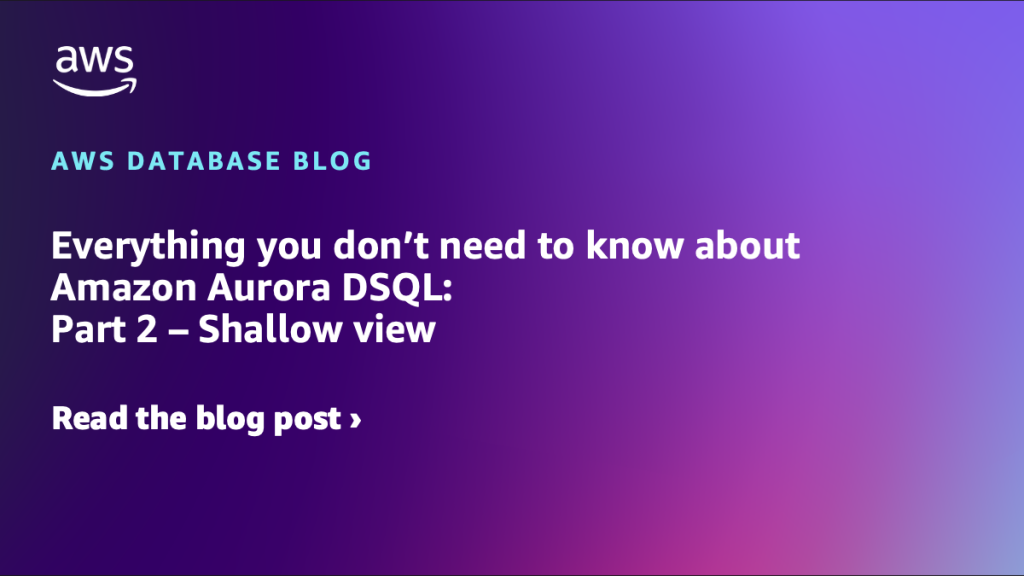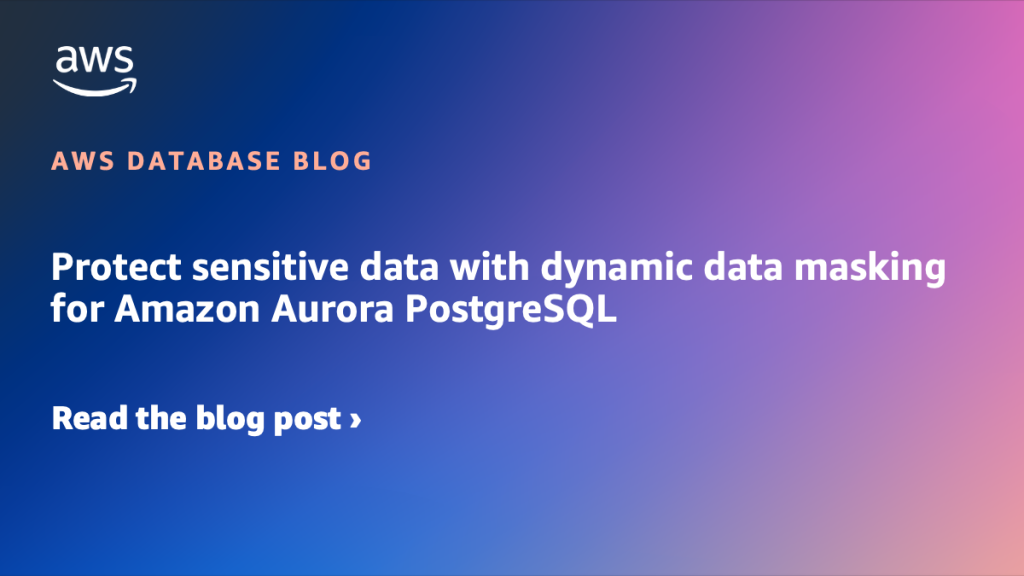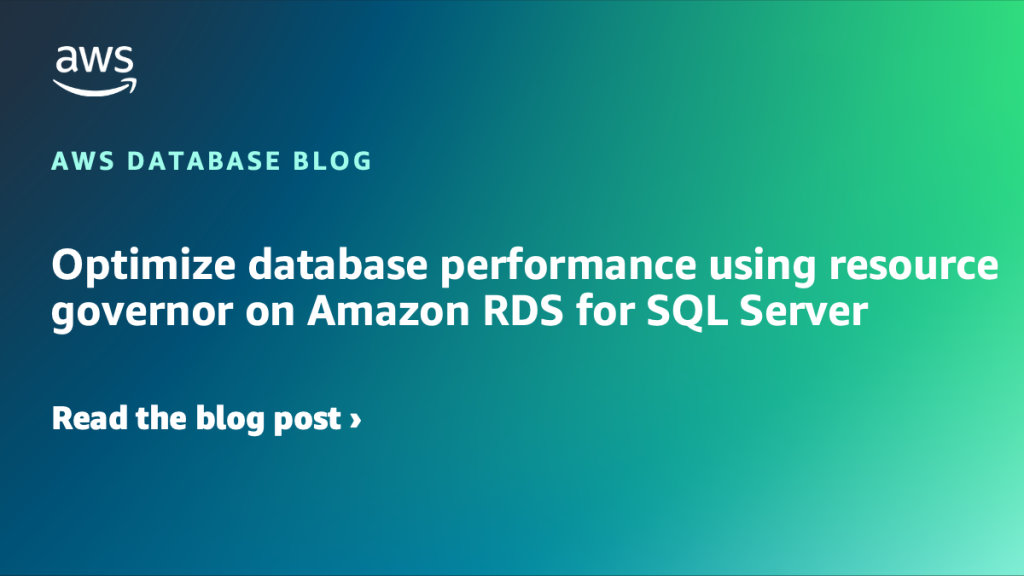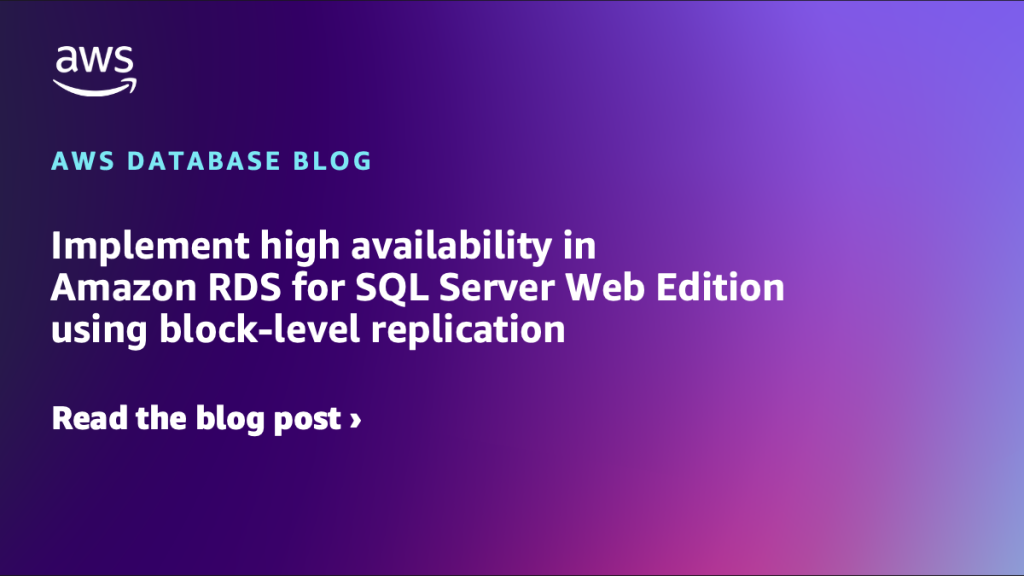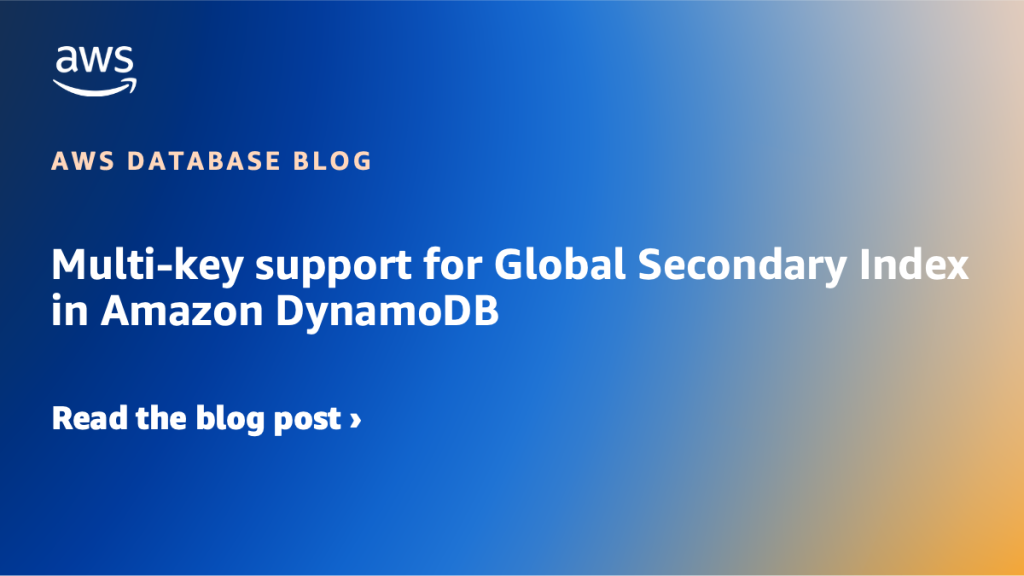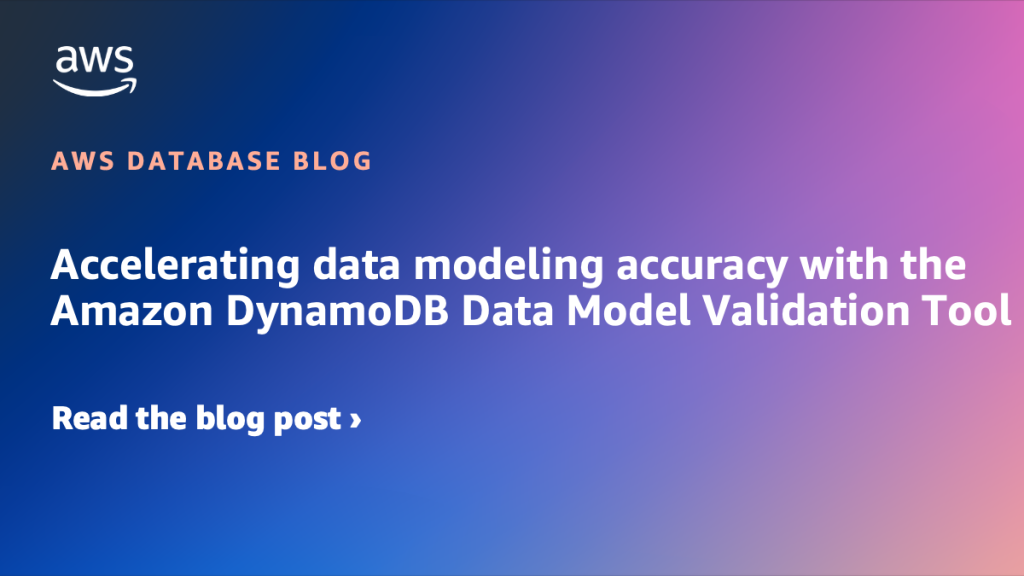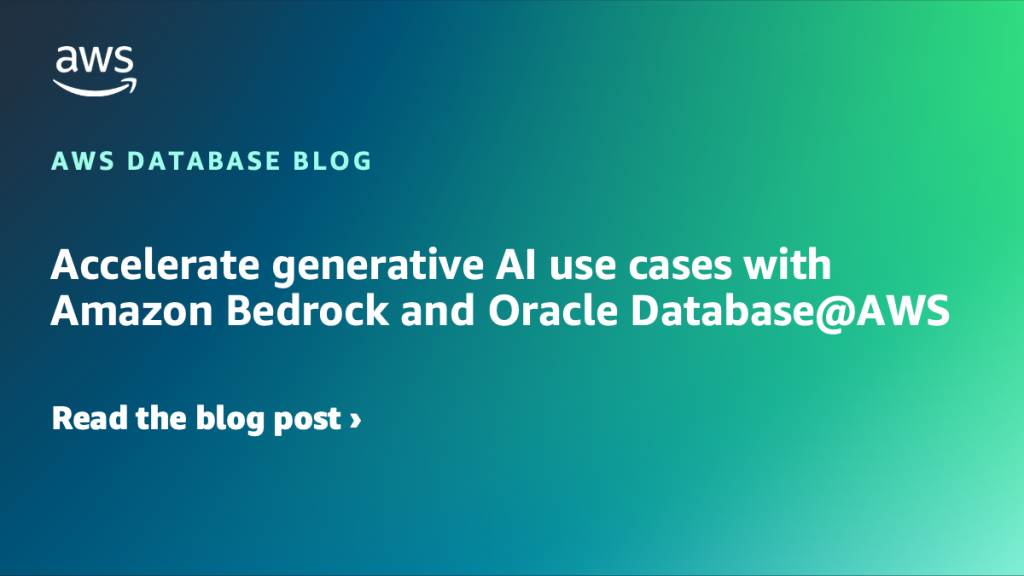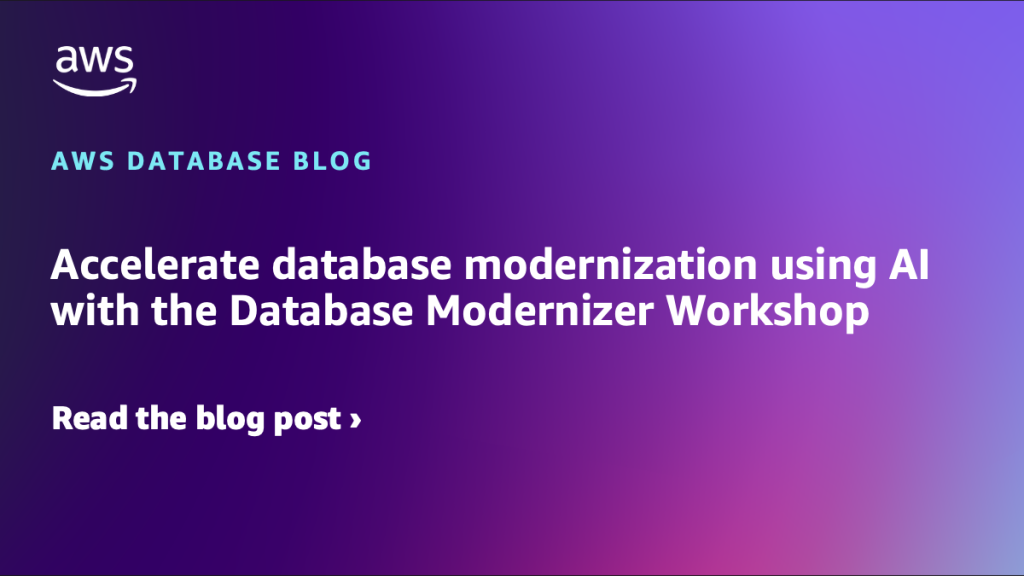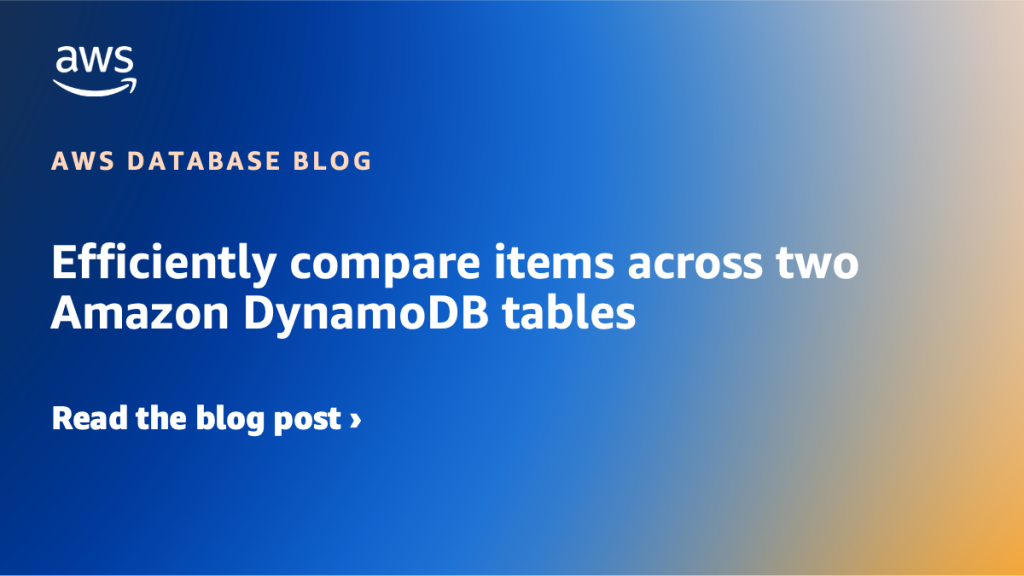AWS Database Blog
Category: Learning Levels
Everything you don’t need to know about Amazon Aurora DSQL: Part 2 – Shallow view
In this second post, I examine Aurora DSQL’s architecture and explain how its design decisions impact functionality—such as optimistic locking and PostgreSQL feature support—so you can assess compatibility with your applications. I provide a comprehensive overview of the underlying architecture, which is fully abstracted from the user.
Everything you don’t need to know about Amazon Aurora DSQL: Part 1 – Setting the scene
In this post, I dive deep into fundamental concepts that are important to comprehend the benefits of Aurora DSQL, its feature set, and its underlying components.
Protect sensitive data with dynamic data masking for Amazon Aurora PostgreSQL
Today, we are launching dynamic data masking feature for Amazon Aurora PostgreSQL-Compatible Edition. In this post we show how dynamic data masking can help you meet data privacy requirements. We discuss how this feature is implemented and demonstrate how it works with PostgreSQL role hierarchy.
Optimize database performance using resource governor on Amazon RDS for SQL Server
You can now use resource governor with Amazon RDS for SQL Server Enterprise Edition to optimize your database performance by controlling how compute resources are allocated across different workloads. This post shows you how to optimize your database performance using resource governor on Amazon RDS for SQL Server. We walk you through the step-by-step process of enabling and configuring the feature, including how to set up resource pools, create workload groups, and implement classifier functions for effective resource management.
Implement high availability in Amazon RDS for SQL Server Web Edition using block-level replication
Amazon RDS for SQL Server has enhanced SQL Server 2022 Web Edition by introducing high availability through block-level replication in Multi-AZ deployments. With this release, you can quickly set up and maintain highly available databases while significantly reducing operational overhead. In this post, we discuss the benefits of block-level replication and how to get started. For more information, see Licensing Microsoft SQL Server on Amazon RDS.
Multi-key support for Global Secondary Index in Amazon DynamoDB
Amazon DynamoDB has announced support for up to 8 attributes in composite keys for Global Secondary Indexes (GSIs). Now, you can specify up to four partition keys and four sort keys to identify items as part of a GSI, allowing you to query data at scale across multiple dimensions. In this post we show you how to design similar data models more efficiently using Global Secondary Indexes with the additional attribute support in composite keys and provide examples of DynamoDB data models with reduced complexity.
Accelerating data modeling accuracy with the Amazon DynamoDB Data Model Validation Tool
Today, we’re introducing the Amazon DynamoDB Data Model Validation Tool, a new component of the MCP server that closes the loop between generation, evaluation, and execution. The validation tool automatically tests generated data models against Amazon DynamoDB local, refining them iteratively until every access pattern behaves as intended.
Accelerate generative AI use cases with Amazon Bedrock and Oracle Database@AWS
In this post, we walk through the steps of integrating Oracle Database@AWS (ODB@AWS) with Amazon Bedrock for by creating a RAG assistant application using an Amazon Titan embedding model in Amazon Bedrock and vectors stored in Oracle AI Database 26ai.
Accelerate database modernization using AI with the Database Modernizer Workshop
In this post, we show how you can use the Database Modernizer workshop to accelerate your database modernization journey from MySQL to Amazon DynamoDB. Traditional approaches to migrating from relational databases to NoSQL solutions like DynamoDB can take several months, requiring extensive expertise in data modeling, application refactoring, and migration strategies. The Database Modernizer workshop, which can be scheduled by your account team as part of the Amazon DynamoDB Immersion Day program, uses AI to help you complete database modernization projects in days instead of months.
Efficiently compare items across two Amazon DynamoDB tables
In this post, we show an algorithm to efficiently compare two Amazon DynamoDB tables and find the differences between their items. We provide an example where two tables, each containing approximately half a billion items, are compared in less than 7 minutes, for less than $10.
